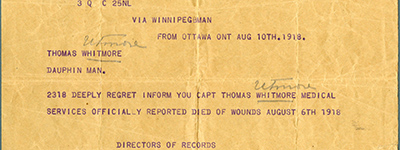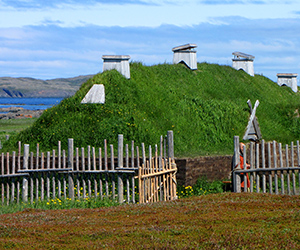CANADA HISTORY - Govenors General
Jeanne Sauvé

Jeanne Mathilde Sauvé, born on April 26, 1922, in Prud’homme, Saskatchewan, was a trailblazer in Canadian politics and public service. As the first female Governor General of Canada, her appointment in 1984 marked a significant milestone in Canadian history. Sauvé’s life was characterized by her dedication to national unity, education, youth, and international diplomacy, and her achievements both before and during her tenure as Governor General were monumental in advancing the role of women in Canadian politics and leadership.
Early Life and Education
Sauvé’s early years were shaped by her family’s move to Ottawa when she was three years old, where they returned to live near relatives. Growing up in the nation’s capital, Sauvé was exposed to the political environment that defined Ottawa, and she developed an early interest in Canada’s parliamentary system. Her father played an influential role in her life, pointing out the bronze bust of Agnes Macphail, Canada’s first female Member of Parliament, inspiring Sauvé’s ambition to follow in her footsteps.
Sauvé’s academic path began at the University of Ottawa, where she worked as a translator for the federal government to support herself financially. Her early exposure to national politics through translation work solidified her interest in governance and public policy. In 1942, she moved to Montreal, where she met Maurice Sauvé, her future husband. The couple married in 1948, and when Maurice received a scholarship to attend the London School of Economics, they moved to England.
During their time in Europe, Sauvé broadened her academic and professional horizons. In Paris, she worked for UNESCO, the United Nations’ agency for education, science, and culture, while also studying at the Sorbonne, where she earned a degree in French Civilization. Her experiences at UNESCO gave her insight into international diplomacy and education policy, laying the groundwork for her future advocacy in these areas.
Early Career and Entry into Politics
Upon returning to Canada in 1952, Sauvé’s career took a significant turn when she was hired by the Canadian Broadcasting Corporation (CBC) in 1959. At CBC, Sauvé worked as a radio and television broadcaster, gaining national prominence through her work in media. She became friends with Gérard Pelletier, who would later become one of Prime Minister Pierre Trudeau’s closest advisors. This connection would prove significant when Sauvé transitioned into politics.
By 1972, Sauvé was persuaded by her political associates to run for office in the federal riding of Laval-des-Rapides under the Liberal Party banner. She won the election, marking the beginning of her political career. Sauvé’s talents and leadership were quickly recognized, and she was appointed Minister of State for Science and Technology by Prime Minister Pierre Trudeau. She was the first woman to serve in the Canadian Cabinet, a significant achievement in a male-dominated political landscape.
Following her successful re-election in 1974, Sauvé’s political influence grew. She was appointed Minister of the Environment, where she advocated for stronger environmental protections and policies aimed at preserving Canada’s natural resources. She also served as Minister of Communications, where her expertise in media and communications proved valuable in shaping Canadian cultural policy.
Speaker of the House of Commons
In 1979, despite the Liberal Party’s loss in the federal election and its transition into the opposition, Sauvé won re-election in her riding. When Trudeau returned to power in 1980, Sauvé was elected Speaker of the House of Commons, becoming the first woman to hold this prestigious position. Her election as Speaker came at a time when the issue of Quebec separatism was a pressing concern for Canada, and Trudeau saw Sauvé as a figure who could help promote national unity.
As Speaker, Sauvé faced initial challenges, struggling with procedural aspects of the role and facing criticism for her inability to maintain smooth parliamentary operations. However, she quickly adapted to the position and implemented reforms aimed at increasing efficiency and cost-effectiveness in the House of Commons. Sauvé earned the respect of MPs across party lines for her commitment to maintaining a fair, non-partisan role as Speaker.
During her time as Speaker, Sauvé was also involved in the 1980 Quebec referendum, campaigning for the Federalist side in favor of national unity. The victory of the Federalist forces, with 60 percent of Quebecers voting to remain part of Canada, was a major political triumph, and Sauvé’s role in the campaign was seen as important in reinforcing the message of Canadian unity.
Governor General of Canada (1984-1990)
In 1984, as Prime Minister Pierre Trudeau’s tenure came to an end, he proposed Jeanne Sauvé as a candidate for Governor General, succeeding Edward Schreyer. Sauvé’s appointment was historic—she was the first woman to hold the office, and her appointment was widely celebrated as a milestone in advancing women’s roles in Canadian public life. However, shortly after her nomination, Sauvé faced a health crisis, spending time in the hospital for an undisclosed illness. Many speculated that she was battling Hodgkin’s lymphoma, which she would later succumb to in 1993.
Despite her health challenges, Sauvé officially took office as Governor General on May 14, 1984. Her tenure was marked by a focus on youth, national unity, and international peace. She took up the cause of promoting youth engagement in Canadian society, believing that the future of the nation depended on the active participation of its younger citizens. She traveled across Canada, meeting with young people, advocating for educational opportunities, and encouraging civic engagement.
Sauvé’s emphasis on world peace coincided with Trudeau’s efforts to de-escalate Cold War tensions during his final years in office. She traveled internationally, representing Canada at diplomatic functions and meeting with foreign heads of state. As Governor General, Sauvé had to navigate a difficult political relationship with Prime Minister Brian Mulroney, who succeeded Trudeau in 1985. Their relationship was known to be strained, with reports of friction between the two leaders over various political matters.
Sauvé was also Governor General during a period of significant constitutional change in Canada. The new Constitution, repatriated in 1982, was implemented during her tenure, and Sauvé had the responsibility of overseeing the Governor General’s evolving role in the context of these constitutional changes. Her ability to adapt the office to the new system was seen as a crucial part of her legacy.
Meech Lake and Constitutional Politics
Toward the end of Sauvé’s term as Governor General, the question of Quebec’s place in Canada once again rose to the forefront of national politics. Prime Minister Mulroney’s efforts to secure Quebec’s consent to the Constitution through the Meech Lake Accord became a focal point for Canadian politics. Although Sauvé did not publicly weigh in on the specifics of the Meech Lake Accord, she made comments about the importance of national unity that were interpreted by some as partisan. Her remarks led to accusations that she was meddling in political affairs, which traditionally had been avoided by those holding the office of Governor General.
Despite this controversy, Sauvé’s dedication to the office was unquestionable. Her efforts to promote unity, foster Canadian youth engagement, and advance global peace left a lasting impact on the institution of the Governor General.
Later Life and Legacy
After leaving office in 1990, Sauvé returned to Montreal, where she and her husband, Maurice, resumed their work with the Sauvé Foundation. The foundation focused on providing educational opportunities for young people and promoting social justice causes, continuing the work that had been so important to Sauvé during her public service career.
Unfortunately, both Jeanne and Maurice Sauvé faced serious health challenges in their later years. Maurice Sauvé passed away in 1992, and Jeanne Sauvé died shortly after, on January 26, 1993, at the age of 70. The cause of her death was Hodgkin’s lymphoma, the illness she had likely been battling since before her appointment as Governor General.
Jeanne Sauvé’s legacy as Canada’s first female Governor General remains a significant chapter in Canadian history. Her trailblazing achievements in Canadian politics and public service paved the way for future generations of women leaders. She demonstrated that women could hold the highest offices in the land and make meaningful contributions to national governance, diplomacy, and public policy.
Sauvé’s life was dedicated to the pursuit of national unity, civic engagement, and peace, and her work continues to inspire Canadians today. From her early days as a translator and broadcaster to her historic roles as Speaker of the House of Commons and Governor General, Jeanne Sauvé exemplified the qualities of leadership, resilience, and a deep commitment to public service.
Cite Article : Reference: www.canadahistory.com/sections/documents/documents.html
Source: NA



